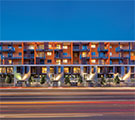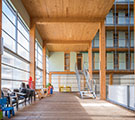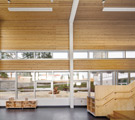
Wood Structures Academy
Brought to you by Think Wood
 8.5 AIA LU/HSW; 0 AIA LU/Elective
8.5 AIA LU/HSW; 0 AIA LU/Elective

From economy, to sustainability, to beauty and aesthetics, wood continues to be an evergreen favorite for architects, designers, and occupants. Whether designing for light frame or mass timber structural systems, the versatility of wood can contribute to thermal, acoustic, seismic and fire performance requirements as well as a sustainable supply chain. As new projects in the public and civic arena open, wood continues to offer high performance durability with a low-carbon footprint and enduring beauty.
Academy Resources
Editorial Resources
Environmental-impact benefits of wood structures and the ways in which green building codes can be met, including the stringent requirements of the Living Building Challenge
Think Wood Resources
Mass timber is a must-know building system for AEC professionals. To inform experts and novices alike, WoodWorks and Think Wood have created their first Mass Timber Design Manual, a free, interactive resource offering the most up-to-date information on topics from products and design best practices, to taller wood construction and sustainability. Get 90+ pages of downloadable resources, design checklists, project profiles and more.
In January 2021, Think Wood surveyed 775 U.S. developers, architects, contractors and industry experts to hear their predictions for the top trends in timber construction this year and to understand how the market has shifted in response to the COVID-19 pandemic. From addressing climate change, to affordable housing, to modular construction, here are the five top trends to watch this year.
Americans spend about 90 percent of their time inside. As a result, building professionals are rethinking how people design, use and occupy buildings, bringing natural elements indoors. Natural elements have been attributed to positive outcomes in humans—from reducing stress to boosting productivity. Architects and developers are turning to natural wood for its biophilic design benefits
Substituting wood for concrete and steel in structural systems of commercial buildings can reduce fossil fuel use and cut GHG emissions. By taking smart steps on how buildings are constructed, local leaders in the AEC industries can make significant strides in reducing their carbon footprint. Learn how innovations in wood products are at the forefront in addressing emission targets.
Mass timber construction is capturing the imaginations of leading building and design professionals, who continue to evolve and advance its potential. Building on the advantages of wood construction, a hybrid structural approach can sometimes best meet a project’s needs. This report covers five hybrid projects that deliver on design, budget and sustainability goals.
It’s impossible to talk about mass timber in Milwaukee without hearing the name Catalyst Construction. The Wisconsin-based contractor was the first in the state to build with the material, leading construction efforts on the city’s first mass timber building, Timber Lofts, and the tall-timber milestone, Ascent. Think Wood recently spoke with the firm’s president, Adam Arndt, and vice president, Tom Baade, to learn what inspired them to reimagine wood construction.
While the carbon-sequestering benefits of wood are well-known, architects and developers are increasingly conscious of mass timber’s impact on forests and sustainable forestry practices. In this Q+A, forestry expert, Dr. Edie Sonne Hall, tackles common questions about sustainable forestry and the built environment.
Mass timber isn’t simply a green building fad, it’s a resurgence of one of the oldest building materials used by humans. Since 1995, industry leaders Perkins&Will have been building with mass timber, and have a portfolio of over 30 iconic, cutting-edge timber buildings to show for it. From D.C.’s public libraries to Chicago’s skyline, see how this innovative firm is challenging conventional design.
For Austin-based hotel developer Bunkhouse, differentiating their properties among the city’s bustling tourism industry has inspired them to do things differently. More than just a good night’s sleep and a great cup of coffee, Bunkhouse’s passion for great hotel design is rooted in the communities in which they exist, creating an awareness of and connection to a sense of place. Their newest project, Hotel Magdalena, epitomizes this design philosophy as the first boutique mass timber hotel in North America.
Sustainability advantages and the general design challenges/opportunities of using heavy/mass timber as a structural system for a tall building

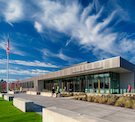
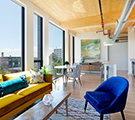
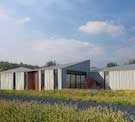
.jpg)
